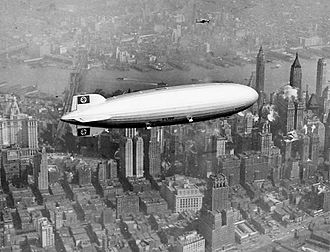The American Engineer/Aviator Who Worked on the Hindenburgh – May 19, 2023

Smokey The Bear and Piper Aircraft….The Rest Of The Story – May 12, 2023
May 12, 2023
Tell Me About the Pepsi Concorde – May 26, 2023
May 26, 2023RN3DB
May 19, 2023
Good Morning—it is Friday and thanks for stopping by the 3DB to check out this weeks blog article. I hope the week was not too taxing on your spirit and you are ready to enjoy a little time with friends and family. This week I have a different kind of story. Yes, it is aviation oriented but it is actually much more than that if you read between the lines.
Enjoy……………………
The Golden Age of the Great Passenger Airships
Mr. Hal Dick graduated from MIT in 1928 and went to work for the Goodyear Tire and Rubber company in 1929; however, he was soon transferred to the Good year-Zeppelin Division, a subsidiary established in the early 1920s by Goodyear’s President Mr. PW Litchfield who had bought the airship patents from Zeppelin on the design of their early airships in the early 1920’s, where he worked with the German engineer brought to the US by Mr. Litchfield and 13 german design engineers who were hired to support the program.
Mr. Dick worked several years on the design, and engineering, of the rigid airships Akron and Macon. The experience gained on this program, along with the fact that he had a dirigible (blimp) pilots license, allowed him to transfer to Germany and work directly with the German airship company, Luftschiffbau Zeppelin, who Goodyear had been sharing their expertise with since purchasing the patents.
(Notice the signature on Mr. Dick’s Dirigible Ballon License is that of Orville Wright)
Mr. Dick worked in Germany from 1934 to 1938 and was the only American to have flown 22 ocean crossings as a crewman on the passenger airships the Graf Zeppelin and the Hiddenburg. Although his status was unofficial, he enjoyed a close working relationship with the German airship company and was provided with information that otherwise could not have been obtained.
Below are a few photos of memorabilia from Hal Dick’s personal collection that he accumulated on his many crossings:
(Boarding Pass from the first transatlantic crossing of the Hindenburg)
(Passenger Manifest from the first transatlantic crossing of the Hindenburg)
(Certificate commemorating Dick’s first crossing of the equator on the Hindenburg, in 1936)
During his time in Germany Dick witnessed the growing influence of Nazism. In 1936 the German air ministry prohibited Dick from collecting further information on an official basis, but because of his friendly relationship with Luftschiffbau Zeppelin personnel, he continued to have free access to the airship plant. Dick was not allowed to take part in the test flights of the newly completed Graf II, and after more restrictions were put in place he left Germany in November, 1938.
Dick was the only man not employed by Luftschiffbau Zeppelin to be aboard the Hindenburg’s first test flight in 1935 and remarkably Dick missed the disastrous last flight of the Hindenburg. Below is an article from a local Kansas paper that details the events of how Hal Dick missed the Hindenburg’s last flight.
All of the information used in this artile I found online. The best place to start looking, if you would like more information, is at the Wichita Sate University Library. There are more bits and pieces out there as well and you can find Mr. Dick’s book, “The Golden Age of the Passenger Airships,” for sale online at Amazon.
Hal Dick’s story is unique and to wrap it up I have included a link to an article I found at the Saturday Evening Post detailing the events of the last flight of the Hindenburg, which I think you will enjoy, as they write about a historical event forgotten by most.
Enjoy the weekend, take care, and fly safe/be safe.
Robert Novell
May 19, 2023







